The Science Behind Edible-Grade Ingredients in Organic Makeup
flareAI
Quick Listen:
Picture this: You're in the heart of Dubai's souks, the air thick with spice and sandalwood, reaching for a tube of lipstick that whispers a secret it's not just for your lips, but safe enough for your palate. Or perhaps you're navigating Singapore's humid haze, eyeing a foundation in a minimalist boutique that promises the purity of a farm-fresh harvest. This isn't fantasy; it's the vanguard of beauty, where The Science Behind Edible-Grade Ingredients in Organic Makeup: Redefining Purity and Performance is transforming how we think about what touches our skin. Far from fleeting trends, this evolution marries rigorous science with unyielding safety, delivering cosmetics that perform like pros while aligning with the body's innate rhythms.
Many women feel trapped by makeup that hides flaws but risks irritation and hidden toxins. This daily choice weighs heavily, dimming confidence over time. Liht Organics invites you to embrace beauty differently. With up to 90% USDA-certified organic ingredients, our vegan, cruelty-free products deliver vibrant color and gentle care, letting you glow with confidence, knowing your skin is nurtured, not compromised. Shop Now!
The Science Behind Edible-Grade Ingredients in Organic Makeup: Redefining Purity and Performance
How brands in the UAE, Singapore, India, and beyond are proving that food-grade cosmetics can be both safe enough to eat and effective enough to wear.
At its essence, edible-grade or more precisely, food-grade ingredients in cosmetics refer to components that have undergone the same stringent evaluations as the staples in your pantry. These are not mere novelties; they are pigments sourced from pulverized beets for that rosy flush, emulsifiers cultured from rice ferments to bind formulas seamlessly, and preservatives extracted from citrus rinds to ward off spoilage. Regulatory giants like the U.S. Food and Drug Administration (FDA) classify these as safe for incidental ingestion, a benchmark that elevates them beyond traditional "clean" beauty into a realm of verifiable wholesomeness.
This paradigm shift arrives at a pivotal moment in the clean beauty narrative, propelled by a discerning global audience weary of obscured formulations and hidden hazards. Consumers, whether they're wellness devotees in Mumbai's bustling markets or sustainability advocates in Sydney's coastal enclaves, are no longer content with superficial claims. They seek alliances between efficacy and ethics products that enhance without encroaching on their hard-won health equilibria. The stakes are high: In an era where skin is the body's largest organ, what we apply matters as profoundly as what we ingest.
Consider the momentum building worldwide. The global natural cosmetics market, valued at USD 31.84 billion in 2023, is on track to expand to USD 45.60 billion by 2030, fueled by a compound annual growth rate (CAGR) of 5.3% from 2024 onward. This surge stems from escalating expenditures on health-oriented beauty solutions and heightened awareness of chemical-laden product's toll on skin integrity. North America commands a 27.0% share as of 2023, with the U.S. leading the charge thanks to Gen-Z's fervor and the burgeoning LGBTQ+ community's embrace of inclusive, gentle options. Color cosmetics, holding 30.1% dominance, thrive via supermarkets and hypermarkets, which captured 38.1% of distribution in the same year. These figures underscore a seismic realignment, where purity isn't optional it's imperative.
In the UAE and India, this resonates deeply with cultural imperatives for Halal-compliant, toxin-free regimens, as noted in recent Euromonitor analyses linking organic sales spikes to spiritual and somatic harmony. Singapore and Malaysia, meanwhile, amplify the chorus through initiatives like the Lion City's Green Plan 2030, which intertwines environmental stewardship with consumer desires for certified, earth-honoring enhancements. It's a tapestry of regional fervor, each thread woven from shared aspirations for beauty that bolsters rather than burdens.
Emerging Trends and Scientific Developments
Peel back the elegant exteriors, and you'll uncover a cauldron of cutting-edge research, where cosmetic chemists and food scientists forge unlikely partnerships. Across continents, the pivot from petrochemical derivatives to bio-engineered proxies is accelerating. In the United States, alliances with the USDA's Agricultural Research Service are birthing algae-derived emulsifiers that replicate silicone's grip minus the greasy residue, offering a textural triumph that's as stable as it is sustainable.
Australia's Commonwealth Scientific and Industrial Research Organisation (CSIRO) pushes boundaries further, engineering pigments from native botanicals that defy perspiration and ultraviolet assault more resiliently than their synthetic siblings. These innovations aren't hypothetical; they're lab-tested realities, calibrated to endure the rigors of daily wear from boardroom brunches to beachside escapades. In India, the Council of Scientific and Industrial Research (CSIR) harnesses moringa's nutrient-dense foliage, distilling actives that hydrate profoundly while imparting subtle sheens, elevating a commonplace shrub to a cornerstone of contemporary formulations.
Edible oils command center stage in this symphony, their profiles meticulously matched to cutaneous needs. Envision cold-pressed coconut elixir from verdant Southeast Asian plantations, its fatty acids mirroring the skin's lipid mosaic for unparalleled absorption. Jojoba, distilled in Australia's sun-baked outback, emulates sebum's composition, averting the occlusion that plagues lesser emollients. From India's fertile plains comes moringa, a verdant elixir brimming with vitamins that fortify without fatigue. These selections transcend hype; they're chemistrally attuned to nurture, ensuring that every application is an act of affiliation rather than abrasion.
Safeguards form the bedrock of this advance. The FDA's Generally Recognized as Safe (GRAS) doctrine, refined in a pivotal 2023 directive, delineates ingestible assets from industrial interlopers with surgical precision, empowering dual-purpose deployment. Echoing this vigilance, Singapore's Health Sciences Authority (HSA) and Australia's National Industrial Chemicals Notification and Assessment Scheme (NICNAS) advocate for end-to-end provenance, from soil to swab. They endorse preservatives like microbial ferments byproducts of controlled culturing that thwart pathogens sans synthetic sting. In Saudi Arabia, the Saudi Food and Drug Authority (SFDA) imposes Halal imprimaturs, excising synthetic hues and metallic contaminants from organic arsenals, thereby enshrining sanctity as a societal sine qua non. Far from fetters, these protocols propel progress, validating that impeccable can indeed be innovative.
Real-World Examples and Regional Applications
The proof manifests most vividly in the vanguard brands reshaping shelves and sensibilities. Singapore's Liht Organics exemplifies mastery, formulating entirely edible compositions from organic fruit-derived chromas and herbal elixirs that sustain vibrancy for 12 uninterrupted hours, bereft of any artificial adjuncts. Their lip confections, infused with hibiscus's crimson kiss and turmeric's golden glow, evoke a sanctuary ritual opulent, plush, and profoundly placid on the pout.
Transatlantic, California's Juice Beauty commandeers orchard-sourced pigments alongside vegan, alimentary antioxidants to sculpt foundations that harmonize complexion while vanquishing oxidative foes. This is cosmetics reimagined as covert care: opaque armor by daylight, insidious elixir come dusk. India's Ruby's Organics innovates with alimental mineral proxies supplanting mica and plant-based waxes eclipsing beeswax, yielding palpebral palettes that gleam with conscience and cling through tropical tempests.
Down in Australia, The Herb Farm espouses authenticated edible oils such as rosehip's regenerative ruby, conjoined with probiotic sentinels for salves that mend as they magnify. Lush, fortifying its Saudi and Emirati enclaves, amplifies artisanal, sans-conservative philosophies into alimentary allusions envision effervescent spheres that evoke candied fruits, shorn of the savor but swollen with solace. These exemplars transcend singularity; they herald a hegemony.
Quantify the quiver: Singapore and Malaysia's pristine-label cosmetic dispatches escalated 18% in the prior annum, courtesy of Enterprise Singapore, heralding a hemispheric wave that disseminates decorum globally. From arid dunes to equatorial drifts, these applications attest: Edible-grade isn't esoteric it's executable.
Challenges, Limitations, and Regulatory Gaps
Yet, no ascent is unscarred. Divergent decrees confound: America's GRAS codex contends with India's Food Safety and Standards Authority (FSSAI) edicts, compelling enterprises to chart a labyrinthine ledger of licenses. Longevity looms large; alimentary facets oxidize with alacrity, necessitating ingenious guardians like rosemary's resinous rebuke to repel microbial marauders minus the "devour me" dilution.
Communication conundrums compound the calculus. "Edible-grade" ignites intrigue yet invites illusion it's fortified for fortuity, not feasting. Purveyors must illuminate sans intimidation, particularly in fiscal fastidious frontiers like the UAE and Australia, where exalted procurement inflates tariffs by 20-30%. These snags, however, hone the blade, impelling architects to hone, not halt.
Business Impact and Market Opportunities
The remuneration rivals the revelation. Across India and Southeast Asia, "palatable purity" positioning procures a 20-30% valuation uplift, per Mintel's 2024 Beauty Survey, metamorphosing doubters into devotees. Emirati upstarts covet Gulf halal horizons, vending luminescence laced with legacy.
Commerce conforms swiftly. UAE's Sephora illuminates "Clean at Sephora" insignias for scrutinized, sheer scripts, while Australia's Mecca unfurls "food-grade affirmed" emblems digitally, rendering reflective retail a fingertip flourish. Ecological synergy seals the pact: Alimentary conduits converge seamlessly with Environmental, Social, and Governance (ESG) imperatives in Australia and Singapore, alchemizing verdancy into vaulted value.
Expert Insights and Future Outlook
Scholarly scrutiny substantiates the surge. The University of Sydney's 2024 foray into cosmetic alchemy discloses that edible chromas rival or eclipse synthetics in antioxidative arsenal, neutralizing nadir at the nanoscale. IIT-Delhi's 2023 inquiry into bio-emulsions unveils alimentary foundations amplifying cutaneous ingress and bulwark resilience, permitting your rouge to root deeper devoid of discord.
Prognostications radiate: India and UAE anticipate an 8.2% CAGR for edible-grade organic maquillage to 2030, via Frost & Sullivan. Malaysia and Saudi Arabia's ascendant bourgeoisie, fortified by formulary fluency, will birth autochthonous avatars. This transcends transient; it's a codified catapult toward crystalline candor.
The Future of Beauty You Could Eat
Fundamentally, edible-grade maquillage melds methodology, security, and stewardship into a manifesto: Aesthetics that venerate vessel and vista alike. Asia-Pacific and the Levant lead the liturgy, from Singapore's silicon-savvy sanctums to Riyadh's ritual resonance. As empirics accrue and axioms align, "commendable for consumption" shall not murmur it mandates as pristine pulchritude's paramount paradigm. Your forthcoming flourish? It savors of stride.
Frequently Asked Questions
What are edible-grade ingredients in cosmetics and are they actually safe to eat?
Edible-grade (or food-grade) ingredients in cosmetics are components that have undergone the same stringent safety evaluations as food products and are classified by regulatory bodies like the FDA as safe for incidental ingestion. Examples include pigments from beets, rice ferment emulsifiers, and citrus-derived preservatives. While these ingredients are fortified for safety if accidentally ingested, they're formulated for topical application not intentional consumption so you shouldn't actually eat your makeup despite the "edible" designation.
Do food-grade cosmetics perform as well as traditional makeup products?
Yes, food-grade cosmetics can match or exceed the performance of synthetic alternatives. Recent scientific research, including a 2024 University of Sydney study, shows that edible pigments rival or surpass synthetics in antioxidant properties, while bio-based emulsifiers deliver silicone-like grip without greasiness. Brands like Singapore's Liht Organics demonstrate this with formulas that maintain vibrancy for 12+ hours, and Australian CSIRO-engineered botanical pigments prove more resilient against perspiration and UV damage than many synthetic options.
Why are edible-grade organic cosmetics more expensive than conventional makeup?
Edible-grade organic cosmetics typically cost 20-30% more due to premium sourcing, rigorous testing, and complex regulatory compliance across different markets. These products require high-quality, certified ingredients (like cold-pressed oils and bio-engineered pigments), navigate labyrinthine licensing requirements across regions, and often need innovative natural preservatives to prevent oxidation. However, this premium pricing reflects verifiable purity standards, with ingredients meeting food-safety benchmarks from organizations like the FDA's GRAS doctrine and Singapore's Health Sciences Authority.
Disclaimer: The above helpful resources content contains personal opinions and experiences. The information provided is for general knowledge and does not constitute professional advice.
You may also be interested in: The Science Behind Organic Makeup and Pregnancy: A Gentle
Many women feel trapped by makeup that hides flaws but risks irritation and hidden toxins. This daily choice weighs heavily, dimming confidence over time. Liht Organics invites you to embrace beauty differently. With up to 90% USDA-certified organic ingredients, our vegan, cruelty-free products deliver vibrant color and gentle care, letting you glow with confidence, knowing your skin is nurtured, not compromised. Shop Now!
Powered by flareAI.co
Share
You May Also Like
-

Discovering Self-Love Through Clean Beauty: A Guide to Nurturing Your Inner and Outer Self
In the journey of self-love, every action, thought, and choice we make towards ourselves can be a powerful affirmatio...
-

The Science Behind Organic Makeup and Pregnancy: A Gentle Choice for Moms-to-Be
wp:paragraph Pregnancy is a wonderful and exciting journey that comes with added responsibilities of ensuring the ...
-

Liht Organics Black Friday: Enhance Your Beauty Routine with Vegan, Organic, and Natural Essentials!
As the holiday season approaches, there’s a sparkle in the air, and we at Liht Organics are thrilled to add a touch o...
-

Organic Makeup That Heals As It Conceals
Liht Organics Empowers Women With Only The Best For Their Beauty NeedsLiht Organics combines the best of both worlds:...
-
![[FEATURE] Liht Organics to debut at TFWA Asia Pacific show](//lihtorganics.com/cdn/shop/articles/1_1.png?v=1759328400&width=170)
[FEATURE] Liht Organics to debut at TFWA Asia Pacific show
‘Organic makeup that’s safe enough to eat’ — Liht Organics to debut at TFWA Asia Pacific show by Hannah Tan | 24 Apri...
-
![[FEATURE] The Singapore-based organic makeup brand is a first-time exhibitor at this year’s TFWA Asia Pacific Exhibition in Singapore in May 2025](//lihtorganics.com/cdn/shop/articles/2_1.png?v=1759328386&width=170)
[FEATURE] The Singapore-based organic makeup brand is a first-time exhibitor at this year’s TFWA Asia Pacific Exhibition in Singapore in May 2025
TFWA Asia Pacific preview: Liht Organics targets expansion in travel retail By DFNI Staff Writer The Singapore-bas...
-
![[FEATURE] Travel Retail Awards 2025 finalists - Best Make-up Product Color-Intense Liquid Lipstick – Liht Organics](//lihtorganics.com/cdn/shop/articles/4_e2f54f0f-fcd1-46e7-9990-fc9d29e35131.png?v=1759328382&width=170)
[FEATURE] Travel Retail Awards 2025 finalists - Best Make-up Product Color-Intense Liquid Lipstick – Liht Organics
Revealed: Travel Retail Awards 2025 finalists By Trbusiness Editor | Wednesday, 23 July 2025 15:21 TRBusiness is th...
-
![[FEATURE] Liht Organics targets expansion in travel retail](//lihtorganics.com/cdn/shop/articles/3_1.png?v=1759328346&width=170)
[FEATURE] Liht Organics targets expansion in travel retail
Organic makeup that’s safe enough to eat: Liht Organics targets expansion in travel retail By Laura Shirk Liht Organ...
-

[FEATURE] Gulf News: TikTok’s strawberry girl makeup trend: How to achieve that rosy glow inspired by Hailey Bieber
Berry, berry, strawberry, love strawberry, like BTS’s J-Hope, the band’s strawberry enthusiast once said. If only we ...
-

[FEATURE] Gulf Business Magazine : Liht-ing it up
Our founder, Nerissa Low was interviewed by Gulf Business, where she discussed her experience launching Liht, an orga...
-

[FEATURE] Daily Vanity: 11 local beauty brands owned by women – you’d be surprised how many of them started in their kitchens!
When we give a shout-out to homegrown beauty businesses, we aren’t just doing it for the sake of supporting local. Th...
-

[FEATURE] Entrepreneur ME : UAE-Based Liht Organics' Nerissa Low On Crafting An Organic Makeup Brand For The Skin-Conscious Consumer
As is the case with the origin stories of so many startups out there, Liht Organics came into being after its founder...
-

Mother, Baby & Child Editor’s Pick: Liht Organics Lights the Way
Excited to be the Mother, Baby & Child’s ‘Editors pick’ for their choice of Beauty brand.The article outlined the...
-

[FEATURE] EmiratesWoman - 8 Fabulous things to do in Dubai this weekend
by SARAH JOSEPHJANUARY 20, 2023Try the UAE’s first virtual reality makeup podium The popular VR-backed makeup exper...
-

Nerissa Low of Liht Organics On The Self-Care Routines & Practices Of Busy Entrepreneurs and Business Leaders
By Maria Angelova, CEO of Rebellious Intl.Date: 4 January, 2023Nerissa Low of Liht Organics On The Self-Care Routines...
-

Liht Organics: Meet the beauty brand that has caught the eye of the Royal Family of Bahrain
By Crystal Lee Digital Editor28 May 2021The world of clean beauty is, ironically, rather murky.That’s because the ter...
-

The latest luxury makeup and skincare drops, including serums, concealers, moisturisers and more
Allisa Noraini21 May, 2021It’s fine to splurge in the name of beauty. This new range of makeup and skincare drops are...
-

These SG Beauty Bosses Are Conquering The World Despite The Pandemic
First Singapore, then the US, China, Germany, Dubai, UK, South Korea, Malaysia, Hong Kong, Thailand, Australia… By...
-

Nerissa Low, Founder at Liht Organics
Written by Callum LaingPosted on December 26, 2020 10 min readNerissa Created Organic Makeup That Actually Improve...
-

Liht Organics – Makeup That Makes You
At Liht Organics, our mission is simple – to provide women (and men) with a safe experience when it comes to beauty s...
-

Why Should We Use Organic Makeup?
We cannot deny that cosmetics is one of our beauty essential item – it enhances our looks and conceals our flaws. Man...
-

Organic makeup and why your skin will love it: Liht Organics founder
By Jolene,July 27, 2020 |7 mins readOrganic make up in Singapore is a trend that is fast-catching on here as we becom...
-

[FEATURE] DC EDIT – Makeup & Confidence: Talking Self-love With Liht Organics’ Founder Nerissa Low
Makeup and confidence — the long, drawn-out fight that many of us have grappled with personally. I’m sure I’m not the...
-

[FEATURE] THE FEMALE CULTURE – I TRIED LIHT ORGANICS AND THIS IS HOW IT WENT
I’m a huge fan of makeup and I love testing out new products so I was pretty excited to get my hands on Liht Organics...
-

[FEATURE] SINGAPORE MOTHERHOOD – The Best Organic and Natural Skincare and Makeup for Pregnant and Breastfeeding Mums in Singapore
Pregnancy is a hormone-volatile period for women. One place where this makes itself seen and felt is on the skin. Som...
-

[FEATURE] AFTER CLINIC HOURS – 21 Back to Beauty Deals in Singapore (2020)
With spas and salons shuttered island wide for two months, I never thought I’d be this desperate for a good old’ Swed...
-

[FEATURE] KUL AL USRA MAGAZINE JUNE 2020
Choosing Pinks & Oranges this summer!Featured: Moisture Burst Lip Glaze in Pink Cupcake.
-
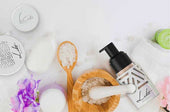
[FEATURE] Award-winning Organic Makeup Brand Liht Organics Gives Back to the Community & Environment During COVID-19
Singapore’s First Organic Makeup Brand with 100% Natural Makeup That Is Safe Enough to Eat Liht Organics promises org...
-

[FEATURE] COSMETICS DESIGN ASIA – COVID-19 ‘WAKE-UP CALL’: SINGAPORE’S LIHT ORGANICS SEES GLOBAL POTENTIAL AMID CLEAN BEAUTY CLAMOUR
Original article at: https://www.cosmeticsdesign-asia.com/Article/2020/06/26/Singapore-s-Liht-Organics-sees-globa...
-

[FEATURE] THE LIFESTYLE COLLECTIVE – BEAUTY SHOULD NEVER BE CRUEL
Date: June 24, 2020Author: Kristen Chen Liht (pronounced as light) Organics is a Singaporean organic makeup brand t...
-

[FEATURE] NÜYOU – 7 ONLINE PLATFORMS TO SHOP FOR CLEAN BEAUTY PRODUCTS
纯净美容(Clean Beauty)的美肤概念,再近几年来越来越受欢迎。随着消费者“爱自己”的美容意识逐步提升,对于用在脸上的所有物品、成分更为关注和讲究。以广义来讲,纯净美容主张使用“干净”成分和无毒配方,让肌肤的可能性损伤减到最小...
-

[FEATURE] COSMOPOLITAN MIDDLE EAST – 3 BENEFITS OF SWITCHING TO ORGANIC BEAUTY PRODUCTS THIS RAMADAN
By Cosmo – May 08, 2020Nerissa Low, founder of Liht Organics, shares the ultimate benefits of going organic this mont...
-

Nerissa Low of Liht Organics: “Seeing Light at the End of the Tunnel; 5 Reasons To Be Hopeful During this Corona Crisis”
Ely Weinschneider, Psy.D.May 8 · 9 min read …It shows us that everyone- whether we are rich or poor, regardless...
-

[FEATURE] AL MARA MAGAZINE APRIL 2020
-

[FEATURE] RetailME April 2020 – Liht Organics Stays Firm On Strengthening GCC Presence
-

[FEATURE] EMARAT AL YOUM NEWSPAPER – 27 MARCH 2020
English Translation:In spring and summer days, women love to have very light makeup in terms of color and texture, ...
-

[ARTICLE] WKND Magazine March 2020 – Know Your Organic Makeup
-

[FEATURE] AVIAMOST DUBAI – March/April 2020
English Translation:Lipstick with organic flowers. Thanks to the rich complex of natural ingredients, the lipstick...
-

[FEATURE] RUSSIAN EMIRATES (MAR/APR ISSUE)
Russian Emirates is a luxury lifestyle and fashion magazine covering information about the UAE, fashion, beauty, j...
-

[FEATURE] – KUL AL USRA MAGAZINE MARCH 2020
GET THE LOOK!
-

[FEATURE] IMAGES Retail ME – Liht Organics Announces GCC-Wide Expansion
Rupkatha Bhowmick Mar 10, 2020 The plan is to reach 75 Liht Organics retail touchpoints by June-July 2020 and touch...
-

[FEATURE] BABY & CHILD SPRING 2020 – NATURAL BEAUTIES
-

[FEATURE] AWQAT DUBAI – Liht Organics: The First Premium Organic Makeup Brand
ENGLISH TRANSLATION:Liht Organics – The First Premium Organic Makeup Brand Liht Organics, a premium organic beauty ...
-

[FEATURE] FRIDAY MAGAZINE – THE RETRO EYELINER LOOK
-

[FEATURE] MOTHER BABY & CHILD – VANITY ESSENTIALS – THE BEAUTY EDIT
-

[FEATURE] Masala! Magazine February/March 2020 Issue – Beauty Debut: Liht Organics
-

[Feature] – TimeOut Singapore – The Best Local Beauty and Skincare Brands In Singapore
For full article, click here.
-

[FEATURE] KUL AL USRA MAGAZINE – LIHT UP YOUR WORLD WITH LIHT ORGANICS
[ENGLISH TRANSLATION]Liht Up Your World With Liht OrganicsThe First Premium Organic Makeup Brand To Debut In The Mi...
-

[FEATURE] SINGAPORE TATLER – 9 Local Beauty Brands You Should Know Of
-

[FEATURE] nüyou August 2019 Issue – 15 Faces To Watch
-

[FEATURE] HONEYCOMBERS – Local Beauty Gurus: Singapore Beauty Brands You Need To Know About
-

[FEATURE] The Wellness Insider – Seeing The Liht With Founder Nerissa Low
-

[FEATURE] 联合早报 (LianHeZaoBao) – Women Entrepreneur Awards 2019 Coverage
-

[FEATURE] THE STRAITS TIMES Life – Clean beauty with a Singapore heart
-

Romantic Organic Makeup Looks for Valentine's Day: Tips, Tricks, and Product Picks
Valentine's Day is the perfect occasion to embrace the beauty of organic makeup. At Liht Organics, we believe in the ...
-
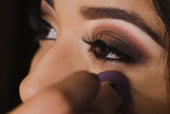
Enhance Your Eyes: A Guide to Eyeliner for Every Eye Shape with Liht Organics
Welcome to the Liht Organics blog, where we believe in celebrating the natural beauty of every eye shape. Today, we'r...
-
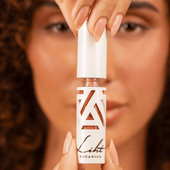
How to do makeup with only lipstick?
At Liht Organics, we believe in the power of clean beauty and the artistry of makeup. Makeup is more than just enhanc...
-

How to Clean Your Makeup Brushes in 6 Simple Steps
Cleaning your makeup brushes may seem like a tedious task, but it's an essential part of your beauty routine. Not onl...
-

Makeup Tips to Help You Look Your Most Flattering on Virtual Meetings!
After more than 2 years of work-from-home arrangement, and possibly hundreds of zoom calls and Google meet virtual me...
-

Learn How to Contour with This Simple Guide for Beginners
Want to take your makeup to the next level? Try contouring to achieve a more defined or sculpted look à la the Kardas...
-
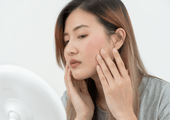
Essential and Easy Makeup Tips for Sensitive Skin
Living with sensitive skin conditions like eczema, psoriasis, and more is already not an easy feat. Throw in makeup t...
-

Raising Your Vibration: A Liht Organics Guide for Empowerment This International Women's Day
wp:paragraph As International Women's Day (IWD) approaches, it serves as a powerful reminder of the journey towards s...
-

The Beauty of Going Bare: Why Sleeping with Makeup is a No-No
Have you ever had one of those nights where you're too tired to clean off your makeup? You might believe, "Skipping...
-

Breast Cancer Awareness: Empower Your Beauty with Liht Organics Makeup
During October, we observe Breast Cancer Awareness Month as a way to unite and bring attention to breast cancer whil...
-

The Hidden Dangers of Carmine in Makeup Colorants: Embracing Healthier and Vegan Options
Makeup has become an integral part of our daily routines, allowing us to express our unique beauty. However, as we pr...
-

How can I ensure that my makeup products are organic and won't harm my skin?
When it comes to makeup, it’s important to be mindful of what you’re putting on your skin. With so many products on t...
-
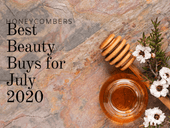
[FEATURE] HONEYCOMBERS – BEST BEAUTY BUYS IN JULY
by Nicole NithiyahWhat’s hot in our beauty hit list: Honest thoughts and top beauty stories we’re swooning over. As w...
-

Liht Organics Introduces Exclusive Gift Sets: Enhance Your Beauty This Festive Season!
As the holiday season approaches and the year draws to a close, Liht Organics is thrilled to present two enchanting g...
-

Get Spooktacular with the Best Halloween Makeup Ideas using Liht Organics' All-Natural, Vegan, and Cruelty-Free Cosmetics!
With Halloween just around the corner, it’s time to let your creativity shine and transform yourself into a spooky,...
-

Celebrating World Animal Day with Liht Organics: Embracing Natural Cruelty-Free Makeup
wp:paragraph As we observe World Animal Day, the team at Liht Organics takes great pride in honoring our pledge to...
-
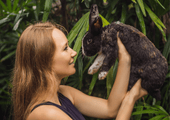
Reasons Why You Should Choose Cruelty-Free Cosmetics Instead!
With increasing exposés unveiling the ugly truth behind animal testing that goes on in the beauty industry, it is lit...
-

Celebrate Singles Day with Makeup That Empowers – 22% Off at LIHT Organics!
This Singles Day, treat yourself to beauty that goes beyond skin-deep. At LIHT Organics, we believe makeup is about s...
-

Preparing for the Cozy Beauty of Autumn: A Preview of Your Fall Look
As we bid farewell to the warm, sun-kissed days of summer, it’s never too early to start dreaming about the enchantin...
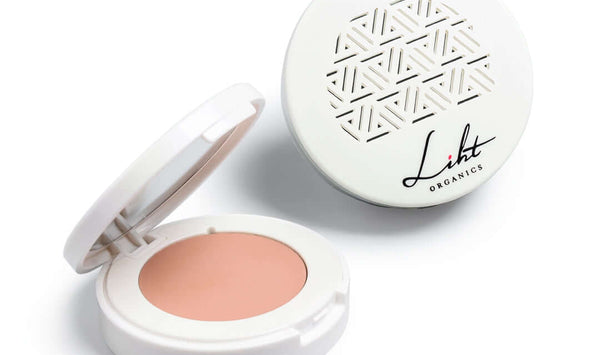

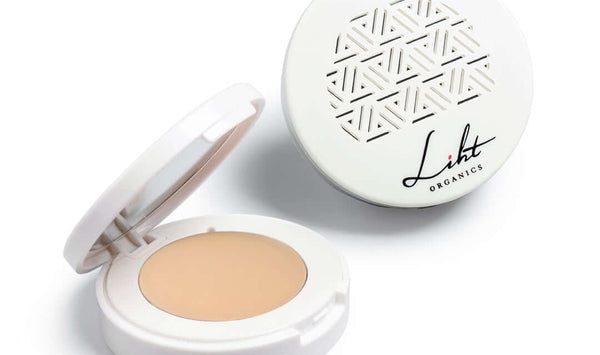
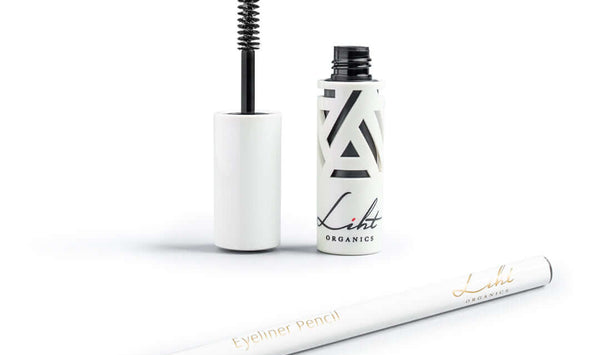
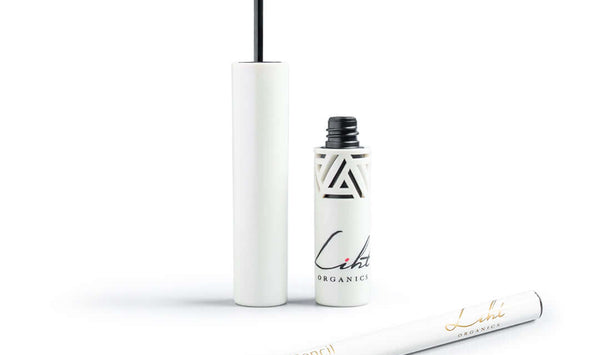

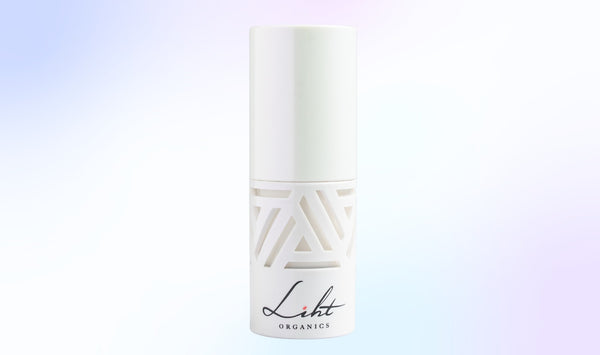

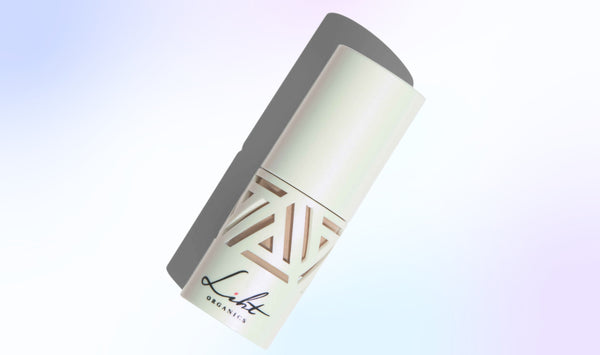
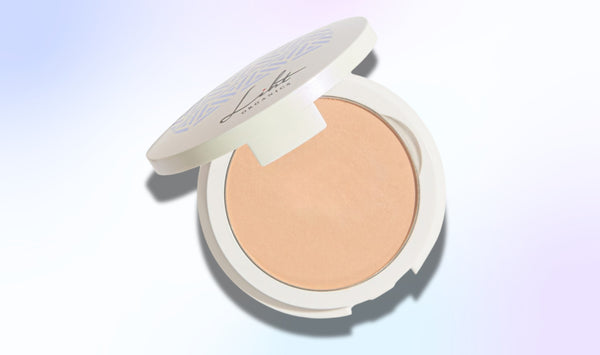
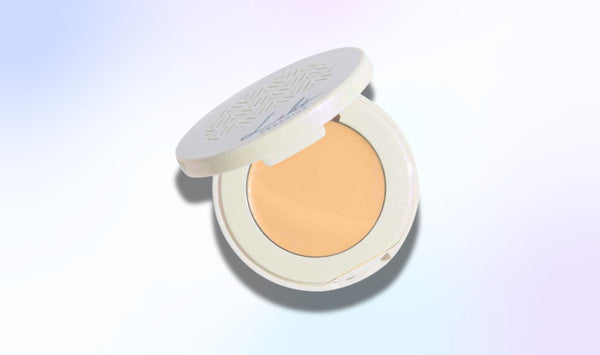
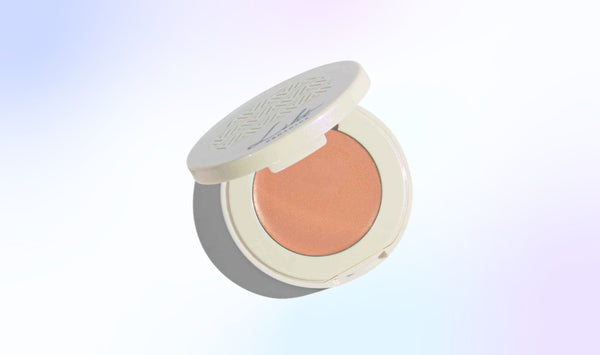
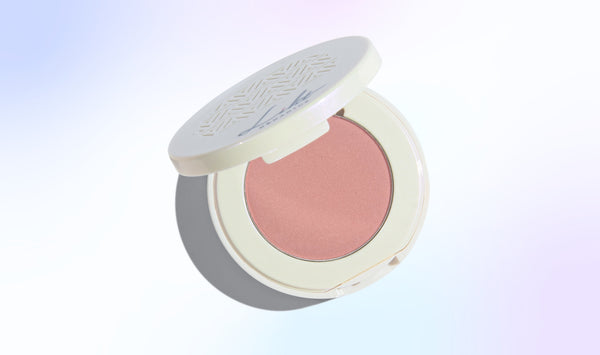
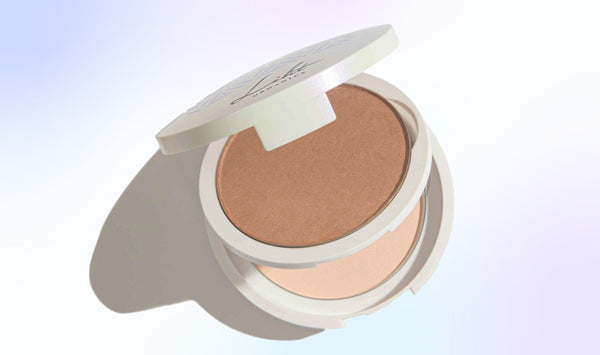
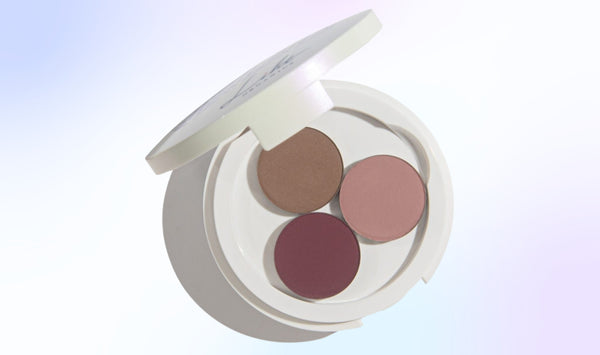
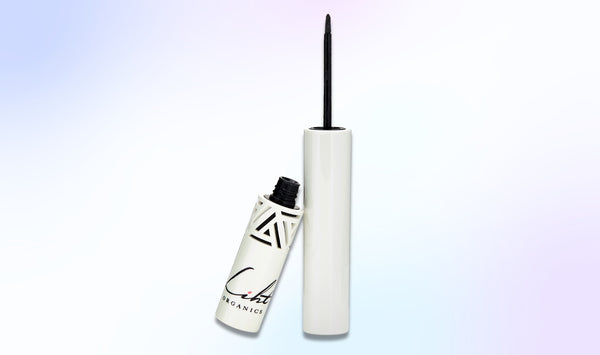
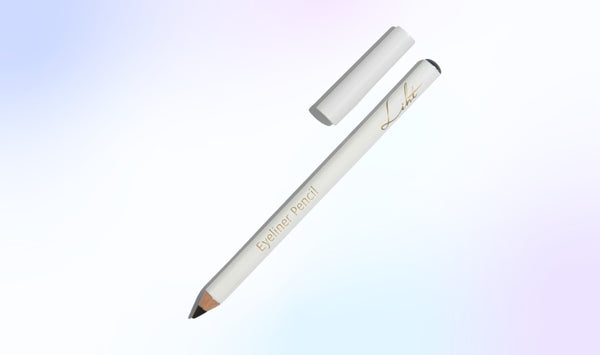


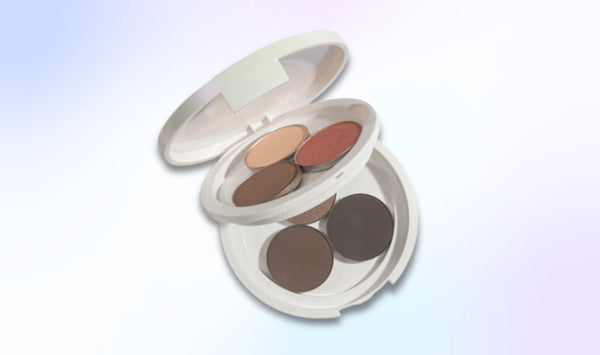
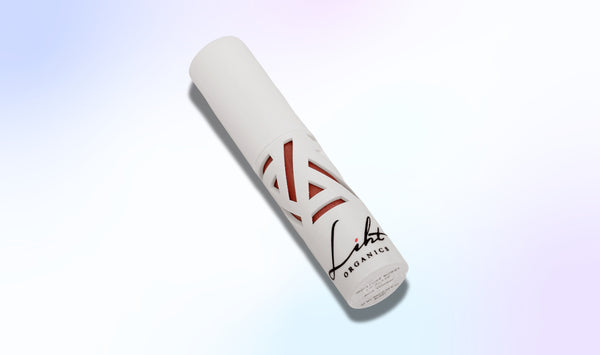
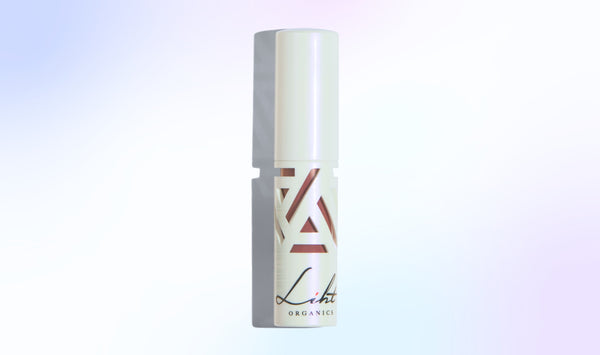
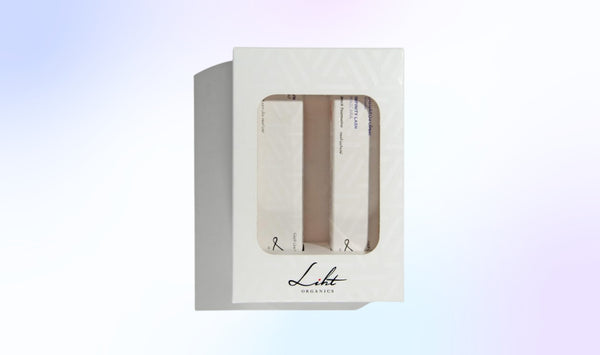
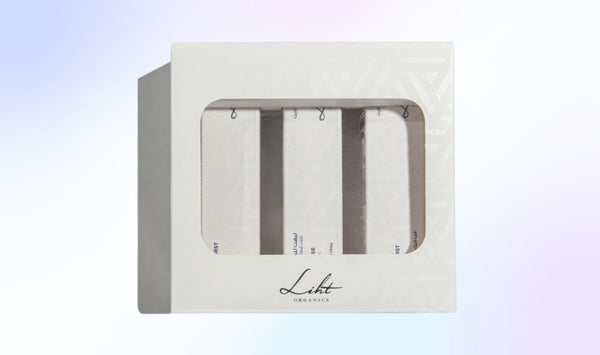


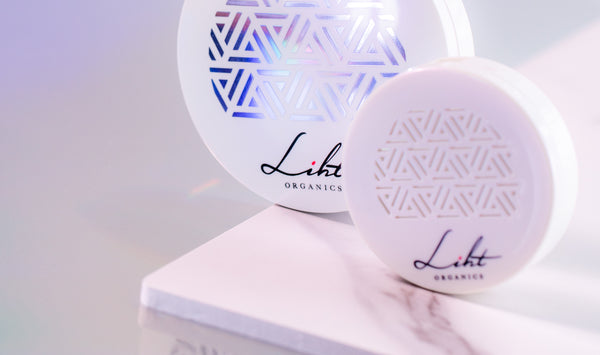
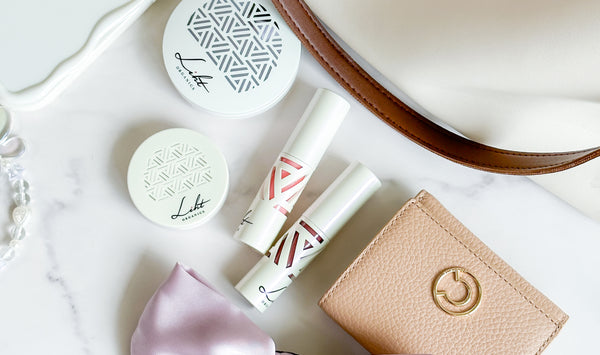
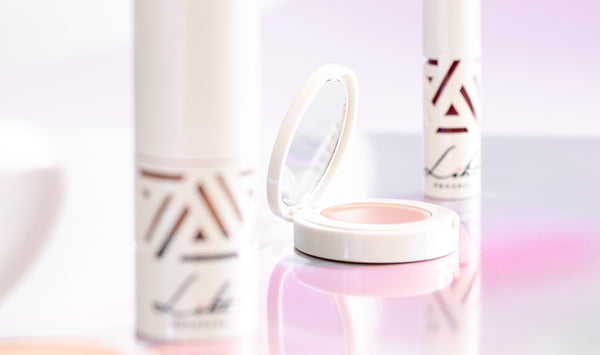




![[FEATURE] Liht Organics to debut at TFWA Asia Pacific show](http://lihtorganics.com/cdn/shop/articles/1_1.png?v=1759328400&width=170)
![[FEATURE] The Singapore-based organic makeup brand is a first-time exhibitor at this year’s TFWA Asia Pacific Exhibition in Singapore in May 2025](http://lihtorganics.com/cdn/shop/articles/2_1.png?v=1759328386&width=170)
![[FEATURE] Travel Retail Awards 2025 finalists - Best Make-up Product Color-Intense Liquid Lipstick – Liht Organics](http://lihtorganics.com/cdn/shop/articles/4_e2f54f0f-fcd1-46e7-9990-fc9d29e35131.png?v=1759328382&width=170)
![[FEATURE] Liht Organics targets expansion in travel retail](http://lihtorganics.com/cdn/shop/articles/3_1.png?v=1759328346&width=170)
































































